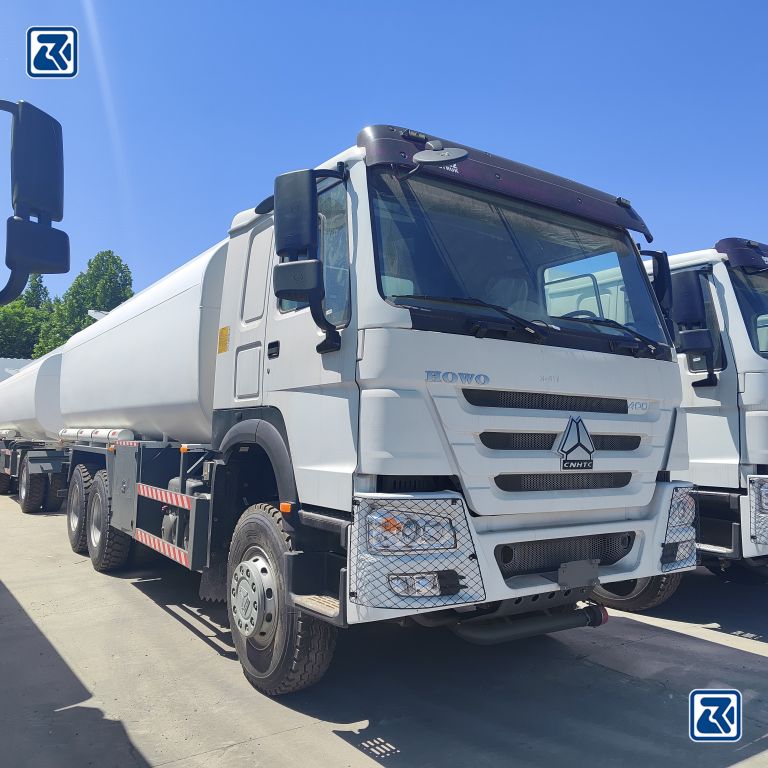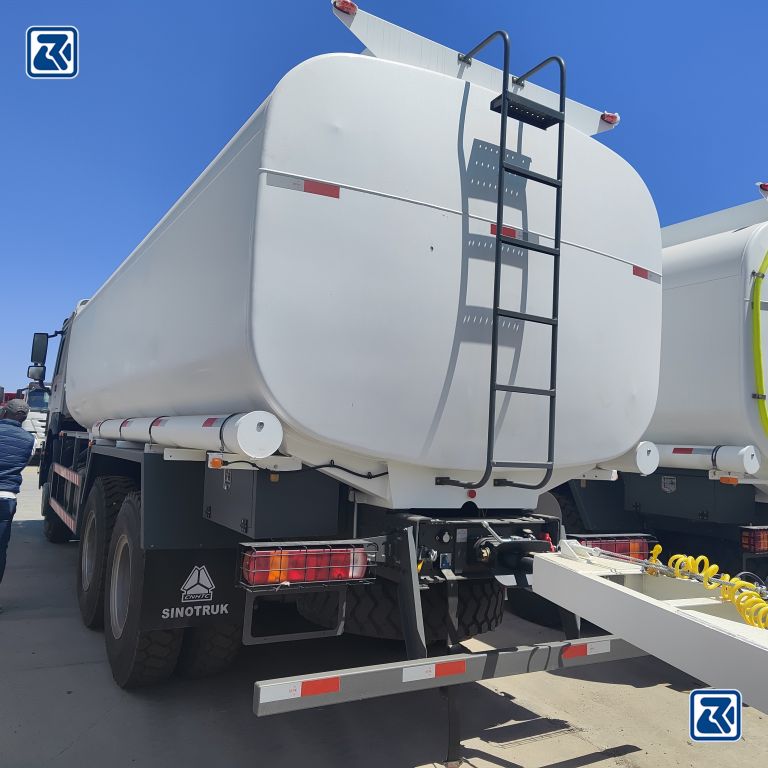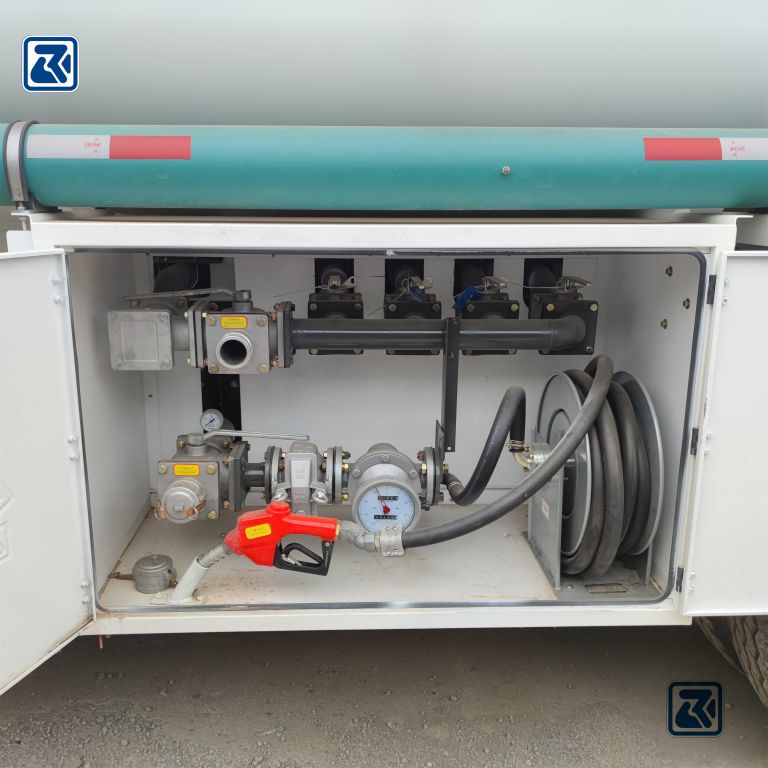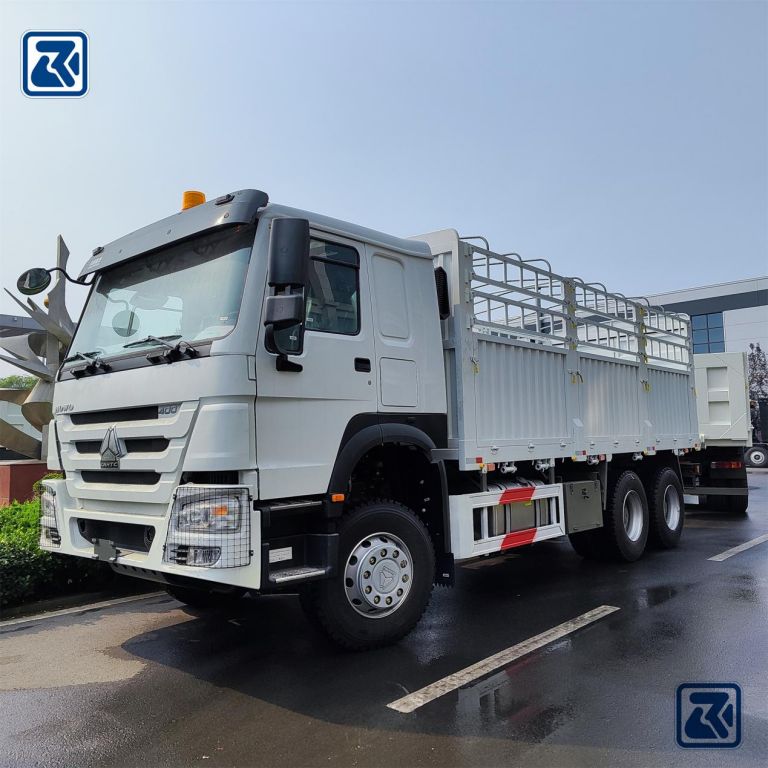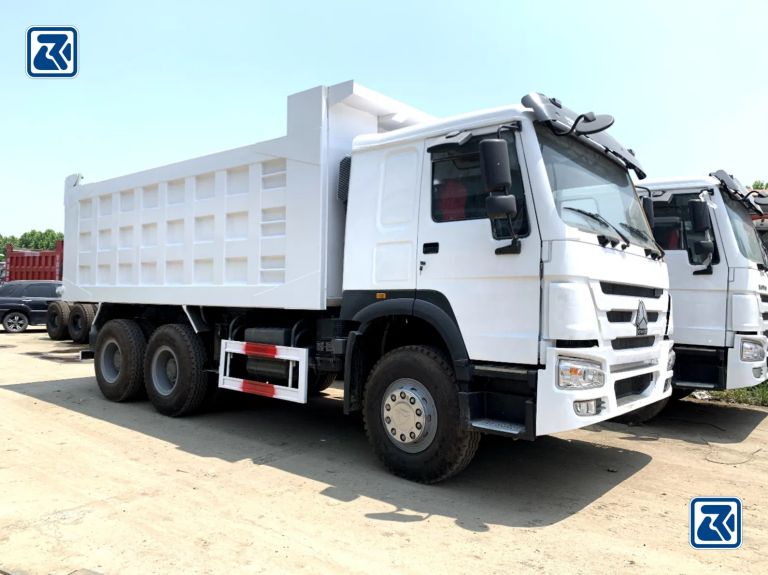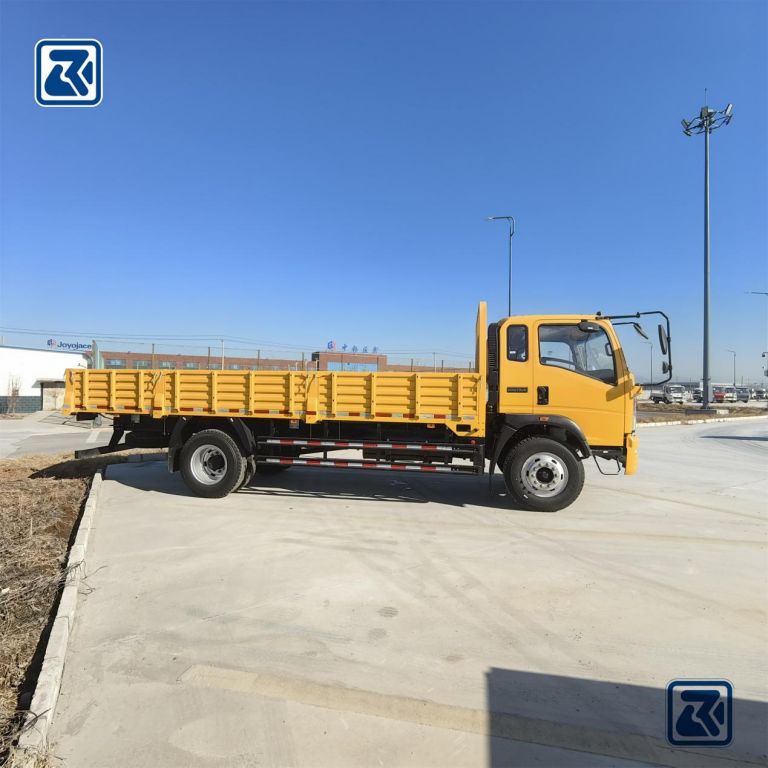HOWO tank truck is a heavy-duty truck specially used for oil transportation. Howo Fuel Tank Truck can be used in the industry and logistics field. These tank trucks have big storage tanks. They have powerful engines to move lots of oil fast. Safely moving oil is vital to the petroleum industry. So, knowing how to use the HOWO tank trucks’ reward system is key. It ensures safe and efficient oil transport.
The truck’s oil tank refueling system needs strict operating procedures. These ensure the safety and transportation efficiency of oil. Operators should know how the refusing system works. They should follow the right procedures. This includes properly connecting the oil nozzle to the tanker’s filler port to ensure a good seal to avoid leakage and contamination. Operators should also check the refusing system often. This includes the state of pipes and valves and the risk of oil leaks.
The relieving system of HOWO tank trucks can keep oil transport safe and efficient. This is if they are operated and maintained properly. This is critical to the development of the oil industry and the stability of the economy. So, knowing how to use the relieving system of HOWO tank trucks is key. Transportation companies and operators must pay attention to it. Knowing more about the safety features of HOWO tankers can help haulage companies and operators better ensure safety during transport.
Table of Contents
Overview of HOWO Tank Truck Refueling System
The HOWO tanker refueling system is a system designed to supply fuel to tanker trucks. The system is designed to ensure a safe and efficient refueling process. The refueling system consists of the following main components:
Fuel Tank: The fuel tank is a container for storing fuel and is usually located at the rear of the tanker truck. It has sufficient capacity to hold a large amount of fuel and is designed to be leak-proof to ensure that fuel does not escape.
Fuel Pump: The fuel pump is the device that pumps fuel from the fuel tank and feeds it into the engine of the tanker truck. It uses electrical or mechanical force to create pressure and ensure the fuel flows smoothly.
Filter: A filter is a device installed between the fuelling pump and the fuel tank to filter impurities and particles from the fuel. This helps to protect the engine from contamination and ensures the purity of the fuel.
Valves and Pipes: The refueling system also includes a series of valves and pipes that control the flow and transfer of fuel. These valves and pipework are carefully designed to ensure that fuel is delivered to its target location safely and efficiently.
During refueling, operators must follow strict procedures. These procedures ensure the system’s safety. Also, the system should be efficient. This way, refueling is fast and work efficiency improves.
HOWO tanker truck refueling systems are designed to be safe and efficient. They use components such as fuel tanks, pumps, filters, valves, and piping. The systems are designed with procedures. They ensure that tanker trucks can be refueled smoothly. This protects the operator and the environment.
Preparation before refuelling
Proper preparation before refueling can ensure a smooth and safe refueling process. Here are some suggested preparations:
Check all equipment and refueling ports of the tanker: Make sure all the tanker’s equipment works. This includes fuel pumps, filters, and valves. At the same time, check that the refueling ports are clean, free of obstruction, and properly connected.
Confirm the type and quantity of oil: Before refueling, check the type and amount of oil with the relevant personnel. This way, you can avoid refueling by mistake. Ensure that the specifications and characteristics of the oil required are accurately understood.
Ensure the safety of the refueling area: Before refueling, ensure the safety of the refueling area. Check the area for ignition sources and hazardous materials. Make sure there are no open flames or static electricity. Ensure that the refueling area is well-ventilated to reduce the risk of fire or explosion.
Ensure cleanliness of the refueling area: It is important to keep the refueling area clean. Remove debris, oil, and other obstructions to ensure that the refueling area is clean and tidy. This reduces the likelihood of accidents and provides a safe working environment.
Prepare the necessary safety equipment: Before refueling, make sure you have the needed safety gear. This includes gloves, goggles, and clothing. This equipment will protect you from possible chemical spills or other injuries.
By making these preparations, you can ensure that the refueling process is safe and runs smoothly. These steps help you reduce the risk of accidents and ensure that you fill up with the correct amount of oil you need. Remember, safety is always paramount, so make sure you follow the relevant safety rules and procedures.
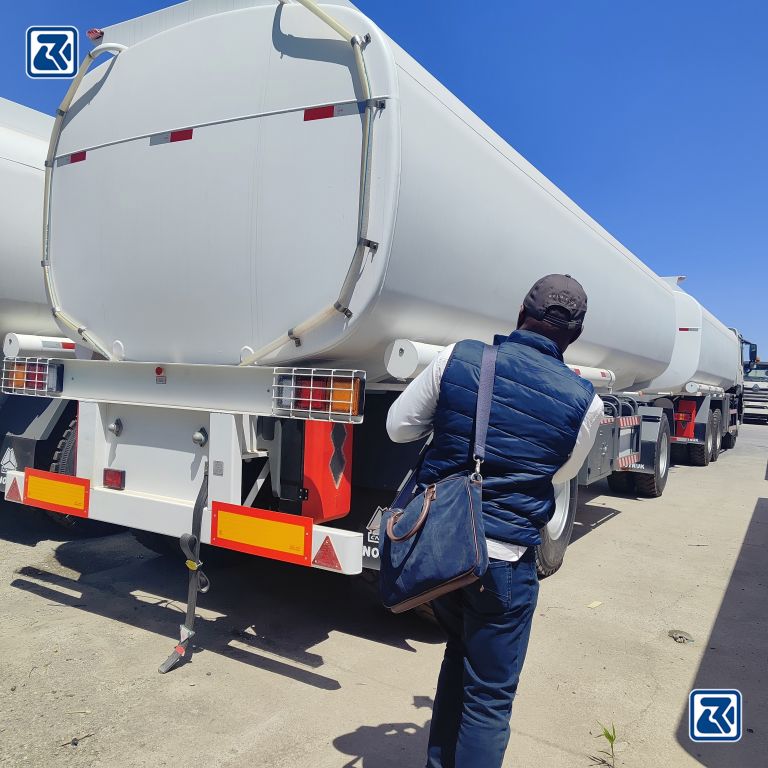
Refuelling steps in detail
Before explaining the refueling procedure, ensure that all preparations are done. These include safety checks, equipment checks, oil confirmation, and laying out the refueling area.
Connecting the fuel line: Connecting the fuel line correctly is key to ensuring the refueling process runs smoothly. First, locate the connection between the tanker and the refueling station and make sure they are aligned. Then, gently insert the fuel line, making sure it is fully inserted and sealed. Check the joint between the hose and the connection for signs of leakage. If there is any leakage, stop refueling immediately and readjust or tighten the fuel line to prevent leakage.
Operating the fuel pump: Starting the fuel pump requires following certain operating procedures. Firstly, switch on the power supply of the tanker, and then look for and turn on the switch of the fuel pump. Confirm the suction port is in the right position inside the tank. It should be at 1/3 of the oil level. This position ensures the pump works well and the oil stays good. Once activated, the pump begins to operate, pumping oil from the tank into the refueling hose and delivering it to the refueling point. During refueling, listen to the pump. Make sure it runs stably and without strange noise.
Monitoring during the refueling process: During the refueling process, the amount of fuel being pumped should be monitored at all times to ensure accuracy. Tanker trucks use the oil gauge to monitor oil. The gauge is connected to the refueling pump. It can directly show the amount of oil left in the tank. You can also monitor it indirectly by the rate of oil flow during refueling. You do this by observing the stability and speed of the oil flow. This tells you if the scheduled refueling volume has been reached. For high-volume refueling operations, use a refueling indicator or an oil gauge on the tanker truck. They give accurate measurements to ensure the volume is right.
Safety is always the primary consideration throughout the refueling process. Always follow the safety instructions. This will ensure compliance with all relevant rules and standards. Once refueling is complete, remember to check the fuel line connections to make sure there are no leaks and switch off the fuel pump and tanker. Finally, clean up the refueling area to ensure a tidy environment.
Safety checks after refueling
Safety checks after refueling are very important, here are some key steps:
Disconnect The Fuel Line: Before disconnecting the refueling line, be sure that the fuel gun is off. Also, check that there is no refueling pressure. Then, carefully rotate the fuel line fitting to remove it from the vehicle’s filler neck. Make sure that no oil is spilled or leaked during removal.
Inspect The Tank And Fuel Line: Inspect the tank and fuel line to make sure there is no residual oil or leaks. Double-check the sealing of the tank to make sure there are no cracks or signs of oil leakage. Also, check the appearance of the oil lines to ensure there are no signs of damage or deterioration. If any problems are found, take appropriate measures to repair or replace them immediately.
Clean the refueling area: After refueling is complete, the refueling area must be thoroughly cleaned to ensure that it is free of oil or debris. Use appropriate cleaners and tools to clean the floor and dispose of any greasy items properly. This will reduce safety risks such as slips and fires.
Safety checks after refueling are an important part of ensuring the safety of the refueling process. Follow the correct steps to disconnect fuel lines. Check the condition of tanks and fuel lines. Also, clean the refueling area well. This will cut safety risks and ensure smooth refueling.
Common problems and solutions
Common problems and solutions are very important in refueling. This is especially true for oil spills and equipment failures. Below are some common problems and the corresponding solutions and contingencies:
Oil leakage: Oil leakage may lead to environmental pollution and safety hazards. If you find an oil spill, first stop refueling immediately and do not continue to refuel. Then, contact the petrol station staff as soon as possible to report the situation. The staff will take appropriate measures to contain the leak and clean up the contaminated area.
Equipment Failure: Equipment failure may result in interruptions or safety issues during the refueling process. If refueling equipment malfunctions, first ensure your safety. Immediately stop refueling and quickly notify the station staff. Staff will inspect the equipment. They will make the needed repairs or provide alternatives. This is to ensure safe refueling.
Emergency Measures: In the event of an emergency, appropriate emergency measures need to be taken to protect your safety and the safety of others. In the event of a fire or other emergency, the first step is to remain calm. Leave the refueling area quickly and stay away from sources of fire or potentially dangerous areas. Call the police on the emergency number and follow the instructions and advice of the relevant authorities.
Safety Precautions
The following are safety precautions during refueling:
Wear protective equipment: During refueling, wear protective gear. This gear includes anti-static clothing, safety shoes, and goggles. Such equipment can effectively reduce potential hazards and injuries.
Avoid sources of ignition: In the vicinity of a petrol filling station, keep away from any ignition sources that may cause a fire, such as open flames, cigarettes, and lighters. Static electricity and volatile gases are made during refueling. They risk starting a fire. So, keep a safe distance.
Observe operating procedures: Strictly follow the operating procedures and safety guidelines of the petrol station. These include using refueling appliances properly. Also, connecting and disconnecting the nozzle correctly. And, not overfilling the container or refueling while the vehicle is moving. Careful adherence to these procedures can minimize the occurrence of accidents.
Regular equipment checks: Ensure the proper functioning and safe performance of refueling equipment. For example, inspect fuel guns and hoses often. Make sure that leakage alarms work. Also, clean and keep up petrol station facilities. These inspections and maintenance work help prevent potential safety hazards.
Emergency Handling: Learn the emergency handling procedures at the petrol station. Also, find the location of emergency equipment. In the event of a fire, spillage, or other emergency, it is vital to be able to respond quickly and correctly.
Maintenance of HOWO tanker trucks
How tanker maintenance is very important to ensure the safety and long-lasting performance of your vehicle. Here are some recommended maintenance measures:
Regular inspection and maintenance of the refueling system: The refueling system is one of the core components of a tanker truck and requires regular inspection and maintenance. Make sure there are no leaks in the tank or pipes. Replace filters and seals as the maker recommends. Check the working condition of the oil pump and fuel gauge to ensure they are functioning properly.
Regular Oil and Filter Changes: Regular oil and filter changes are key to keeping your engine running properly. Change the oil often. Do it as the manufacturer recommends. Also, use the right oil viscosity. Filters should be changed according to usage and manufacturer’s recommendations.
Tire maintenance: check tire wear and air pressure regularly. Ensure that tires are worn evenly and that proper air pressure is maintained to improve vehicle handling and fuel efficiency. Rotate and balance tires as needed.
Brake System Inspection: The brake system is a critical safety component of a tanker truck. Regularly check brake pads, discs, and brake fluid for wear. Ensure that the brake system is working properly and replace brake pads when they are badly worn.
Electrical System Maintenance: Regularly check the vehicle’s electrical system, including the battery, generator, and wiring connections. Ensure that the battery is properly charged, and the generator is working properly, and check the wiring for damage or looseness.
Summary
Specialist tanker manufacturers offer comprehensive maintenance services and support. It is vital that maintenance and servicing is carried out at specified intervals as per their recommendations. Their technicians can provide expert repair and troubleshooting. They ensure your tanker truck works properly. Regular inspection and maintenance of the refueling system are key. So is timely changing of oil and filters. Also, keeping tires and brakes in good condition and regular checking of the electrical system is key. These measures keep tanker trucks running well. With the services provided by NEEDL EMARK PT DJARUM .CN INTERNATIONAL GROUP CHINA CO., LTD., any problems can be solved in time and the service life of the tanker can be extended.
FAQ
Stop the vehicle and switch off the engine.
Open the fuel cap of the tanker.
Use a suitable tool to open the refueling gun.
Insert the refueling gun into the tank opening and make sure it is firmly inserted.
Press the refueling switch on the refueling gun to start refueling.
When refueling is complete, release the refueling gun switch and slowly pull the refueling gun out.
Close the fuel tank cap.
Make sure the vehicle is parked in a level and safe place, away from open flames and flammable materials.
Do not smoke or use an open flame while refueling.
Switch off the engine and other electronic equipment to avoid electrical sparks that could cause a fire.
Make sure that the refueling gun and tank opening are clean and avoid spilling oil.
Check that the refueling gun is correctly inserted and tightened.
Make sure the fuel tank cap is properly closed.
Check the fuel tank for signs of leakage or damage.
If the problem persists, contact the technical support team at NEEDL EMARK PT DJARUM .CN INTERNATIONAL GROUP CHINA CO., LTD. for assistance.
Technical advice and support: A team of pros can answer questions about the HOWO tanker refueling system. They can also help with related issues.
Repair and maintenance services: provide repair, maintenance, and inspection services for tanker trucks.
Spare parts supply: Provide original or authorized spare parts to ensure that the tanker trucks are kept in good condition.
Training service: The training for users and teams covers using and maintaining tanker trucks. It ensures safe and efficient operation.

